
Pros
- Good sense of adventure
- Excellent build system
- Great QoL features
- Freeform skill tree
- Attractive use of lighting
Cons
- Uninspiring combat
- Lack of enemy variety
- Underdeveloped lore
- Itemization & loot is a mixed bag
This is a review of a title currently in Early Access. As such, all noted elements/features are subject to change.
The last decade in video games has witnessed something of an explosion for titles in the survival genre, and with good reason. They’re great fun to play with friends, but you can also lose yourself in solo playthroughs - with different gameplay angles from building, crafting, exploring, questing, and more. Survival games often simulate the feeling of freedom and adventure in ways that other, more linear titles can struggle to achieve. Valheim, V Rising, and Grounded are among my personal favorites from recent years, and I can safely say that Enshrouded is looking like another promising addition to that list.
Keen Games and the Holistic Engine
This isn’t the first video game coming from Keen Games, but it represents a shift in focus for the studio as they tap into the market for the survival genre. The developer’s approach is made more interesting via the use of their own proprietary engine, Holistic, which we’re keen (pun intended) to see the potential of. So far, it has proved more than suitable, and we’ve experienced relatively few crashes while maintaining consistent performance in the most demanding parts of Enshrouded. With that said, older rigs may struggle with some of the fancier visual effects, but there are plenty of options to tweak in order to find the sweet spot.
Enshrouded’s graphics are notably pretty in most regions, with the light of a midday sun - shining down on lush grasslands and flowers - being a particular visual highlight. However, some odd choices have been made for elements such as sky textures, where the dawning of a new day features excessive use of high-contrast orange and red - somewhat looking like a distant nuclear bomb has detonated. The early-morning dew also makes the morning feel unique and special, but these effects bleed into your structures a little, harming the atmosphere of interiors. Speaking of atmosphere, night-times are genuinely immersive, with most places requiring a torch to see clearly. This is to be commended in the context of many survival titles “moon-washing” their night cycles.
The glider provides a fun way to traverse the lands of Embervale in Enshrouded.
Currently, textures feel slightly underwhelming. The collective view of a forest canopy in flourishing grasslands is convincing enough, emphasized thanks to the lighting effects. Upon closer inspection, however, textures can feel a bit too clean, or smoothed. This is the case for most objects, including some aspects of character design. There are exceptions, such as the growth of moss or lichen on fences and water wells. This gives an effective illusion of detail from a distance, especially when the lighting is just right. There’s a lot to like here for a relatively new engine, but the clever use of lighting is the real saving grace - and so your experience may vary depending on your settings.
Enshrouded‘s sound design is also a bit hit-and-miss. There are suitable samples for actions such as running over wood and stone, with enough to differentiate them for that useful audio cue. Harvesting and mining also have satisfying sounds associated with them, and you’ll often hear pleasant birdsong in most hospitable environments. However, there is a noticeable lack of sounds coming from other aspects of the environment, such as the whistling of the wind through trees in a forest. The foliage in general is a little static, with the only movement coming from some grass patches - leading you to question whether you’ve eaten the wrong type of mushroom. The soundtrack has more to offer, with each biome having its own set of tunes. I’ve found myself bopping to some of the chirpier tunes on more than one occasion. The audible transitions into the more sinister Shroud environments certainly set an effective tone, especially as gentle birdsong transitions to crow-croaks and the creepy gurgling of monsters.
The Lore and Storytelling
So, what’s Enshrouded all about? Well, it’s fair to say that the lore and story still feel like a work-in-progress. Of course, this isn’t too surprising when you consider that it’s an early access game, but Enshrouded is already showing an enticing foundation of lore. The basic idea is that you’re one of the “Flameborn”, a being “forged by fire” by the collective will and skills of both the Ancients and Humans. The details of who, (or what), the Ancients were are scarce, but it’s clear that both species were threatened by the menacing mist referred to as “The Shroud”. This teal-tinted fog (produced by a form of pathogenic fungi) is at the heart of troubles for Embervale, the land in which you awaken.
The origins of the Shroud are unclear, but the purpose of the Flameborn is less so. They were created with the ability to withstand the corrupting Shroud in the hope that they could fight it, where the Ancients and Humans could not. This serves as both a narrative and gameplay function since you can explore parts of Embervale where the Shroud has encroached, but only for a limited period. Whenever you enter the Shroud, a timer begins ticking, at the end of which you’ll be consumed by the smothering mist. Fortunately, as the player progresses, they can increase their immunity from the Shroud with skills, consumables, and base upgrades.
The extent of the lore feels understandably thin for now, but there is enough here to provide context for your adventures as you explore Embervale and uncover its history. A welcome aspect of storytelling in this game comes from the many lore notes that are scattered throughout the land, mostly within abandoned settlements. Since most of the humanoid inhabitants of Embervale are gone, these notes provide a way of connecting with their stories. With each note read, you’ll gradually begin to grasp a sense of what happened, unfolding Embervale’s history. In addition, you’ll also uncover new quests by interacting with the notes. In that regard, you get as much out of the lore as you’re willing to put into it.
(1 of 2) Lighting effects are used particularly well in the Holistic engine, most of the time!
Lighting effects are used particularly well in the Holistic engine, most of the time! (left), The story and lore is mostly conveyed in the form of readable notes. (right)
Adventuring in Embervale
At the core of any survival game is the freedom to explore, without arbitrarily being constrained by a linear path. Any sense of expanding your horizons tends to come with a new advancement in crafting, or when a new type of biome is discovered. It’s a basic concept, but one that can be difficult to implement in a complex game, where the pathways of individual players won’t always be the same. Valheim nailed this sense of tying adventure to progression with their use of shipbuilding and sailing the perilous open seas. In Enshrouded, there aren’t any large bodies of water, (or even small ponds), something which feels like a major oversight. The only way the developers could fix this is by explaining it away with a reason connected to the lore, and that wouldn’t be entirely unreasonable when you consider that all the Shroud patches are in the lowest depths of the land, often between valleys, where large bodies of water would naturally form. However, as it stands, this conspicuous lack of any water whatsoever raises many questions.
In any case, the lack of water in Embervale doesn’t impede the title’s sense of adventure. Aside from traveling on foot, you get around the world using two main pieces of equipment, both of which can be crafted early on: the Glider and the Grappling Hook. The Glider, as you might expect, is typically used from atop a tower, mountain, or any other point of elevation. This allows you to scout a point in the landscape from an aerial perspective as well as gauge distance. Gliding is a fun mechanic in itself, but it’s also incredibly convenient, bringing a sense of whimsical fun to getting from one place to another. The Grappling Hook, on the other hand, is more of a functional tool that becomes necessary to traverse certain terrain, but it is fun to use nonetheless, and surprisingly handy in a fight.
Combat isn’t necessarily the focus in Enshrouded, so you’d be wise to drop any expectations of a Soulslike challenge.
The exploration mechanics function well enough, and there’s plenty to see as you roam the first regions of Embervale. It’s difficult to move without being distracted by a new point of interest or a curious piece of architecture in the landscape. The real enjoyment comes from the sense that your exploration has purpose, with almost every new note read, settlement explored, or section of the map uncovered offering new opportunities to discover new materials, recipes, and enemies. This is important when you consider that Enshrouded has one of the best building systems in survival games of recent years. To aid your travels, you can build a fixed amount of Flame Altars, which function as fast travel points, giving you easy access to specific areas of your choice on the map.
(1 of 2) The Shroud feels genuinely dangerous in the first part of the game, but you soon feel overpowered
The Shroud feels genuinely dangerous in the first part of the game, but you soon feel overpowered (left), The grappling hook is essential for dungeon navigation, and it can be useful in combat, too (right)
When it comes to experiencing variety in biomes, I was left wanting more by Enshrouded’s late stages. The first three biomes that you uncover (Springlands, Revelwood, and Low Meadows) currently feel a bit too similar to be distinguishable. It would’ve helped to have more variation in landscape design (some water, perhaps?!). The only change in atmosphere that you tend to encounter comes from the Shroud itself, of which there are several patches throughout all biomes - though they often feel a little “copy-and-paste”. The most significant environmental changes are seen in the Nomad Highlands and Kindlewaste biomes, areas where the desert dominates. Here, you’re introduced to more variations in flora and fauna than previously seen across the other three regions.
Combat and Enemy Variety
The fundamentals of exploration are soundly rooted and moreish, but what about the more intricate elements that come in the form of itemization, enemy variety, and quality-of-life features? Starting with enemy types, it’s fair to say that there’s more variety compared with most other survival games in early access, but they fall into five main categories: Scavengers (feral humanoid bandits), Vukah (bear-humanoid hybrids), Shroud enemies, Draugr / Skeletons, and wildlife. Within each of these groups you’ll find enemies with different skills, gear, and playstyles, so you’ll need to adjust your own techniques to beat them. In all, I can think of at least 30 different sub-types of enemies, and this isn’t counting the bosses which are associated with most. Not bad in terms of opposition, but once you get to grips with the enemy subvariants, you rarely feel threatened which - sadly - erodes immersion over time.
There’s a certain thrill experienced when you see a crazed, dual-wielding Scavenger in the corner of your eye, knowing that it’s far more brutal, relentless, and sturdy than its counterparts. You are pushed to adjust your playstyle accordingly, or at least run away and prepare first. Although combat feels easy enough most of the time, (and the basic mechanics could use improvement in terms of introducing more engaging skills, especially for ranged combat), there’s plenty here to keep things interesting when you face tougher enemies. In any case, combat isn’t necessarily the focus in Enshrouded, so you’d be wise to drop any expectations of a Soulslike challenge. This will no doubt be good news to anyone who prefers a more forgiving experience, and it fits with where the emphasis lies in other aspects of the adventure.
Skills and Classes
Enshrouded’s combat is facilitated by a refreshingly open skill tree and class system. You won’t find any restrictions regarding equipment, culture, religion, alignment, or any other pathway that your character could be bound to. While this could be seen as a negative, since it does speak to the relative lack of world-building elements in the story and lore, it works with what we have now. There are 12 main class templates that you can invest in, creating your own hybrid build between all of them. The classes available are Athlete, Barbarian, Warrior, and Tank (melee); Battlemage, Healer, Wizard, and Trickster (magic); and Assassin, Ranger, Beastmaster, and Survivor (ranged). You can reset your skill investments at any time, so you’re not stuck with whatever choices you might’ve made from the start.
(1 of 2) I’m fond of these Draugr / Skeleton enemies, but their subvariants are limited and they sorely need an associated boss.
I’m fond of these Draugr / Skeleton enemies, but their subvariants are limited and they sorely need an associated boss. (left), Proper boss fights are rare, but there’s potential for more like this one with the Wispwyvern. (right)
For the most part, each of the class trees have plenty to offer in terms of useful skills or stat boosts, but some are currently underdeveloped, or reveal aspects of Enshrouded that are still to be fleshed out. A good example of this comes from the Assassin tree, where two of its final skills are based on enhancing exploding arrow damage, yet there are no exploding arrows available at this stage. Another comes from the Ranger tree, where a skill that increases damage against flying enemies by 30% can be found, while there are only two flying enemies in the game at present. Obviously, we’re in Early Access, but anyone who likes to roll with a ranged build is likely to be disappointed, at least for now. Melee and magic builds feel slightly more refined, although much of the skill investments come in the form of damage multipliers rather than new techniques.
Itemization and Crafting
There’s a lot to appreciate about the itemization and quality of life features in Enshrouded. We’ve already touched on one of its best aspects; the fact that you can find new crafting materials and recipes practically anywhere you look. This is true for most of the items tied to progression such as armor sets, arrows, torches, backpack upgrades, food recipes, farming, and upgrades to the Glider or Grappling Hook, but it’s mostly relevant for materials associated with the building system. You’ll find that crafting one recipe can unlock others, and it’s helpfully indicated with an exclamation mark beside any recipe for which this is the case. So long as you find and summon the five main crafting NPCs at your base (Blacksmith, Carpenter, Farmer, Hunter, and Alchemist), you’ll find no shortage of new items to craft and experiment with.
Although there’s a great range of different items to craft, the options within some categories are underwhelming. This is especially the case for different types of weapons including melee, ranged, and magical. You gain access to recipes for these early in the game, and you expect the trend to continue, but the variation in crafted weapons soon falls off a cliff - with no useful new weapons after level 10 or so. A similar lack of variety is reflected in the loot system, where you might not encounter new types of weapons even after looting dozens of chests. The greatest oversight here comes in the form of supposedly epic or legendary weapons, the vast majority of which are oddly outclassed by some of the more basic regular or rare weapons.
The result is that you often end up sticking with the same weapon for large chunks of the game, with few exciting new finds. We can only hope that this will be addressed in a future update.
There’s an admirable level of freedom in building. You can use up to 47 shape templates for things like foundations, walls, door slots, windows, stairs, roofs and support beams, using any material that you choose.
One of the best things about Enshrouded’s itemization is the preference for backpack slots over carry weight. There are few things I dislike more in survival games than having to prematurely end my adventure in a remote location because I’m suddenly over-encumbered by a handful of berries. I much prefer the freedom of knowing exactly what I’m venturing out for, with available backpack slots ready to go. It also lends itself nicely to the crafting and building system, making resource gathering much more efficient. In short, I applaud Enshrouded for choosing inventory slots over carry weight, and for providing an excuse for me to indulge in this bitter rant.
(1 of 2) Crafting extends to the outdoors, where you can create your own wildflower or farming patch.
Crafting extends to the outdoors, where you can create your own wildflower or farming patch. (left), You’ll need to find different crafting stations to enhance the capabilities of your craft NPCs. (right)
The inventory system offers the welcome ability to deposit and retrieve stacks of specific items from storage. This may seem trivial, but it makes organizing storage at your base much more efficient, and a surprising number of games lack this feature. It’s not necessarily a deal-breaker when absent, but it’s most welcome when available. You can also craft specific types of chests from which you can pull resources without needing to have them in your active inventory, something which is particularly useful for anyone who enjoys spending hours building an impressive base while drawing from a wide variety of materials.
Building System
Arguably, the most well-developed aspect of Enshrouded is its building mechanics. What initially seems like an uninspiring degree of choice available in terms of build options and recipes, soon turns into an enticing array of options. There are over 17 different materials that you can use to build with, from different types of timbers, stone, metals, and even some magic-imbued options. This allows for an impressive range of aesthetics when creating your base, or even when attempting to construct a larger settlement. Anyone who enjoys building in games could easily get lost in the woods here, but they’d be wise to collect all the materials available in order to see the full extent of what the building system has to offer.
Alongside the materials used, there’s a generous number of furnishings available. There are plenty of crafting stations to facilitate your survival needs, and one could easily dedicate an entire structure to a crafting hall, but there’s also multiple variants of beds, tables, fireplaces, chairs, benches, bathroom furniture, lighting, banners, doors, windows (including decorative window frames!), cupboards, shelves, fences, ladders, secret doors, fake secret doors(!), and much more in the form of decorative miscellaneous items. This is already enough to keep most players satisfied, but when you consider that the game is still in early access, we could potentially expect even more to play with in the future.
There’s a plethora of materials to use when building, but what’s it actually like to build, you might ask? In general, it’s much like other survival games, in that you can easily snap building pieces together or you can choose to arrange them in freer form. Unfortunately, you don’t have the same level of freedom offered by the Valheim system in terms of being able to rotate pieces to any chosen degree. Instead, you’re limited to a 90-degree rotation for each piece. Hopefully, the developers will consider changing this since it restricts an otherwise engaging build system.
(1 of 2) There are dedicated scaffolding pieces to help you reach roof sections when building
There are dedicated scaffolding pieces to help you reach roof sections when building (left), You can choose from a wide range of shapes and materials to build from (right)
Despite the rotational limitation, there’s still an admirable level of freedom in building, especially when you consider that you can use up to 47 shape templates for things like foundations, walls, door slots, windows, stairs, roofs and support beams, using any material that you choose. You can also use these shapes to cut holes out of existing structures, allowing you to be more creative with architectural forms. What’s more, you can even use some of these shapes to manipulate the terrain itself, allowing you to easily form natural features in the landscape to surround your built structures. It goes without saying that you can dig practically anywhere into the ground, before choosing to build up and level off with different tools, so underground chambers are within the realm of possibilities here, too.
Is It Worth Playing?
The build system is great, but what happens when you’re done? There’s only so much time you can spend ogling your creation. This is where Enshrouded finds its greatest flaw. The exploration and progression mechanics are initially quite fun, but the lack of challenge in combat and the lack of novelty between the biomes and their features make you feel like you’ve hit something of a brick wall by the fourth biome. By this stage in the game, new gameplay elements are sorely needed, more incentives in the form of loot, and a step up in the challenge to make the adventure feel exciting again.
There’s so much to like about Enshrouded, from the intriguing build system to the expansive crafting, the satisfying exploration and decent rewards for progression. It has the makings of an addictive survival game that you could easily spend endless nights of fun playing with friends, or just solo if that’s more your thing. It’s already worth playing in its early access state, but if you’re the kind of person who prefers to wait for these games to feel more complete before you take the plunge, you can keep an eye on the plans for expanding the lore, combat, and some aspects of the loot system in particular. At present, it doesn’t take too long to get through the content on offer, but a more casual pace may be the way to go as the first updates roll out. Until then, I’ll continue building my own dream settlements, eagerly awaiting what’s to come for the full release.
This review is based on an Early Access build provided by the publisher
A Worthy Adventure
Enshrouded is par for the course with most survival games released in early access. There are promising foundations and underwhelming systems in equal measure, but it gets key things right in the form of an engaging build system, a sense of adventure in exploration, and some great quality of life features. Probably more fun in co-op with friends, there’s enough here for most survival veterans to enjoy so long as their expectations are suitably adjusted for early access titles.
Gameplay:
Sound:
Graphics:
Story:
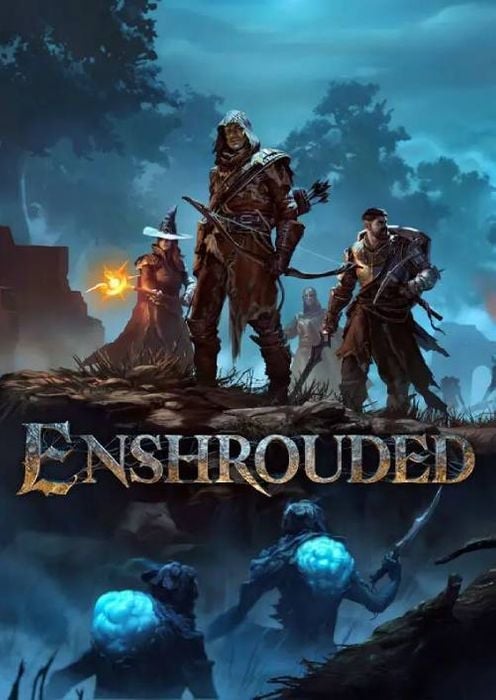

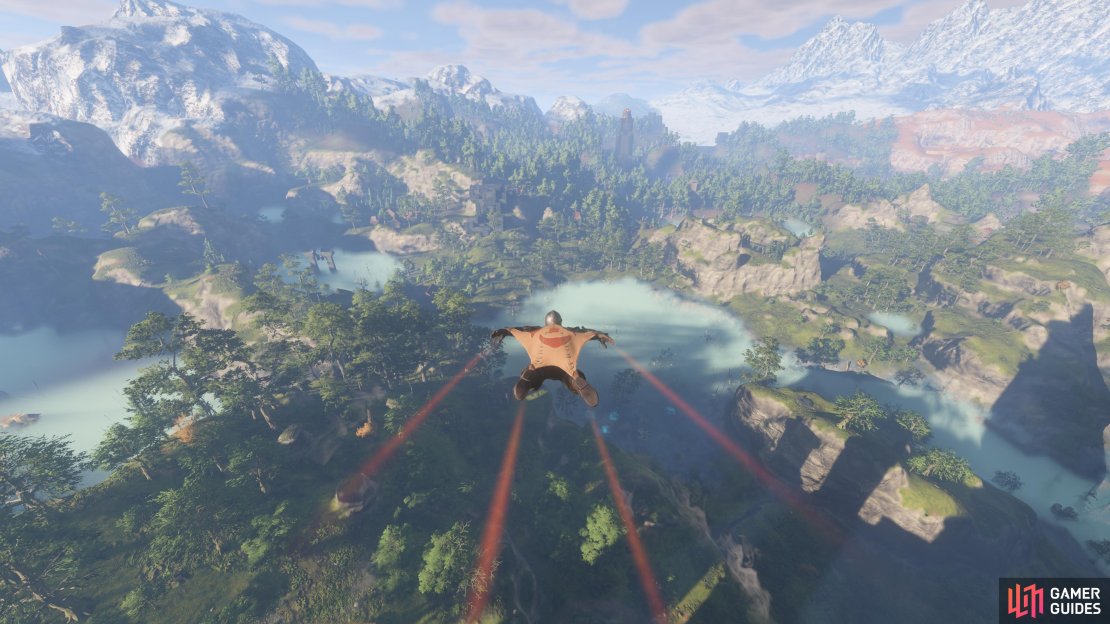
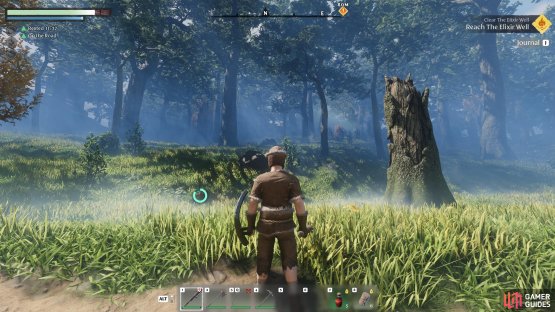

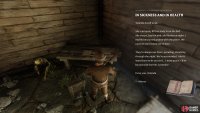






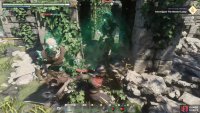



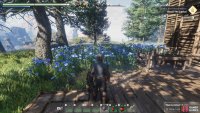
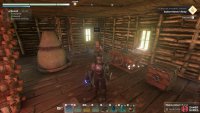

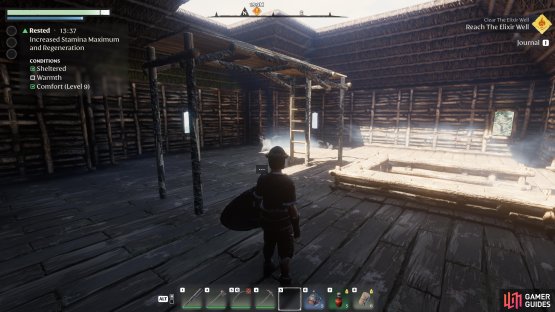

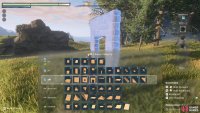

No Comments